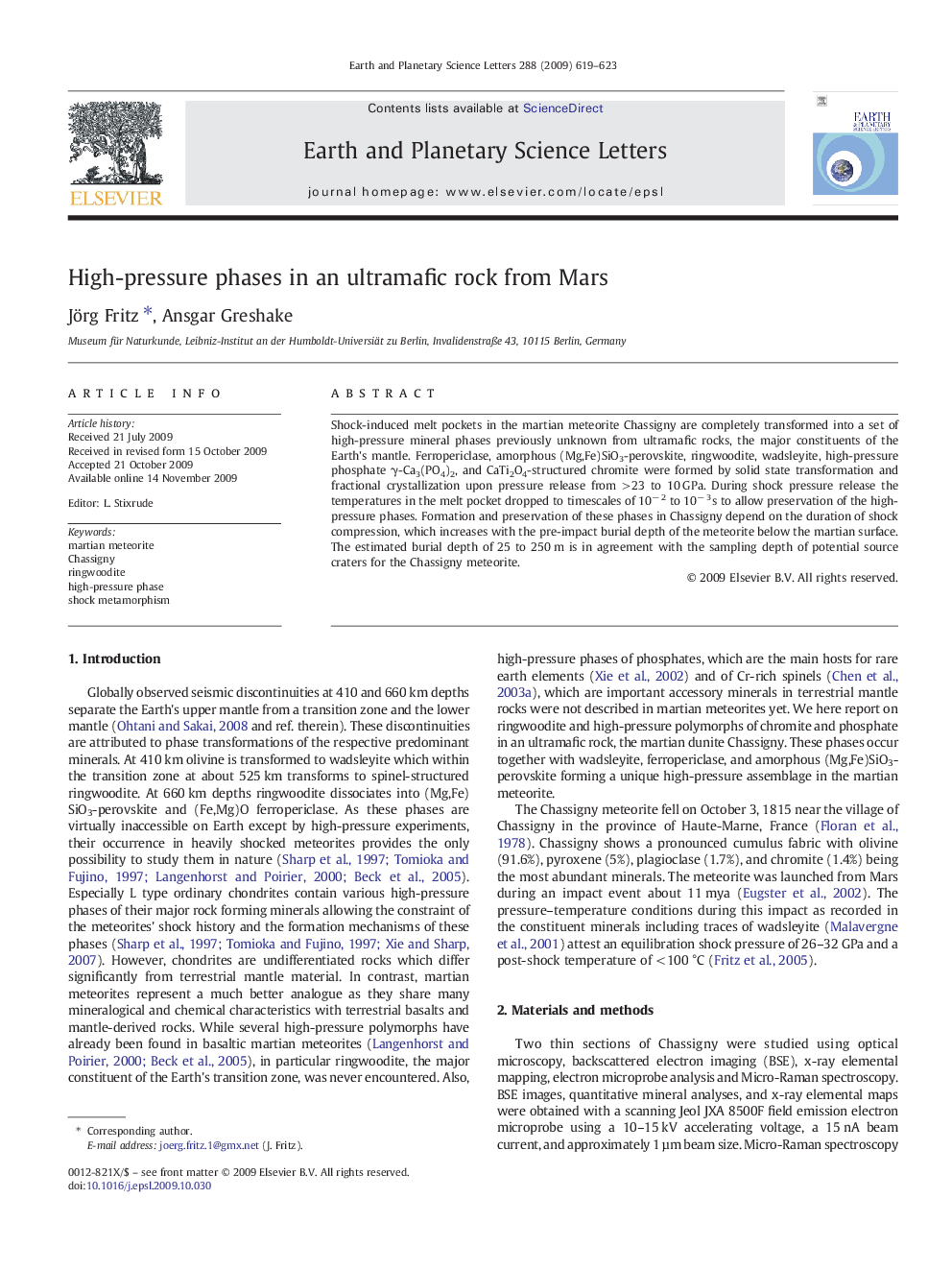| Article ID | Journal | Published Year | Pages | File Type |
|---|---|---|---|---|
| 4678762 | Earth and Planetary Science Letters | 2009 | 5 Pages |
Shock-induced melt pockets in the martian meteorite Chassigny are completely transformed into a set of high-pressure mineral phases previously unknown from ultramafic rocks, the major constituents of the Earth's mantle. Ferropericlase, amorphous (Mg,Fe)SiO3-perovskite, ringwoodite, wadsleyite, high-pressure phosphate γ-Ca3(PO4)2, and CaTi2O4-structured chromite were formed by solid state transformation and fractional crystallization upon pressure release from > 23 to 10 GPa. During shock pressure release the temperatures in the melt pocket dropped to timescales of 10− 2 to 10− 3 s to allow preservation of the high-pressure phases. Formation and preservation of these phases in Chassigny depend on the duration of shock compression, which increases with the pre-impact burial depth of the meteorite below the martian surface. The estimated burial depth of 25 to 250 m is in agreement with the sampling depth of potential source craters for the Chassigny meteorite.
